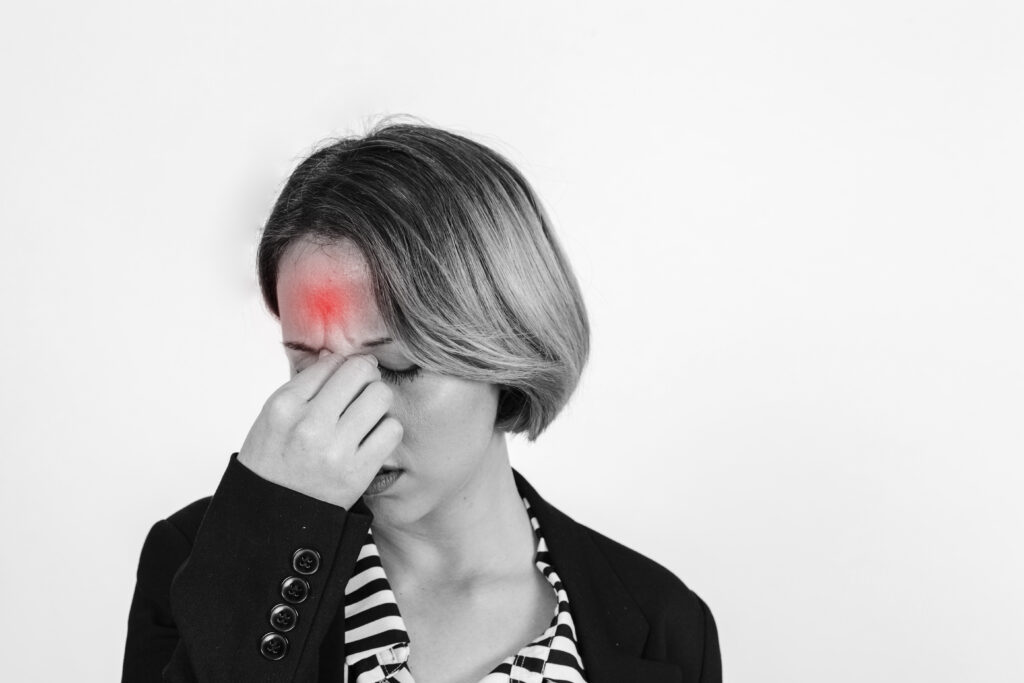If you're struggling with arthritis pain, you might be interested in exploring alternative therapies that offer a holistic approach to managing your symptoms. Methods like acupuncture, yoga, and dietary changes can not only relieve discomfort but also enhance your emotional well-being. As you consider these options, you may start to wonder which specific techniques could work best for your unique situation. The potential benefits are worth examining, especially when it comes to taking control of your health and improving your quality of life. What might you discover about these therapies that could change your approach to pain management?
Understanding Arthritis Pain
Arthritis pain affects millions of people worldwide, making daily activities a challenge. You might experience stiffness, swelling, and tenderness in your joints, which can greatly impact your quality of life. Understanding the nature of arthritis pain is vital for managing it effectively.
There are various types of arthritis, but osteoarthritis and rheumatoid arthritis are among the most common. Osteoarthritis typically occurs due to the wear and tear of cartilage, while rheumatoid arthritis is an autoimmune condition that causes inflammation in the joints. Both types can lead to debilitating pain, limiting your movement and making simple tasks feel intimidating.
When you experience arthritis pain, it's often accompanied by periods of flare-ups, where symptoms worsen suddenly. These flare-ups can be triggered by several factors, including weather changes, stress, or overexertion. Recognizing these triggers can help you prepare and potentially mitigate their effects.
You may also notice how arthritis pain varies from day to day. Some days might feel more manageable, while others could leave you feeling overwhelmed. This unpredictability can be frustrating, but it's important to remain vigilant about your symptoms and communicate with your healthcare provider about any changes.
Benefits of Alternative Therapies
Alternative therapies offer various benefits that can greatly improve your quality of life.
You might experience pain reduction techniques that help ease discomfort, while also enhancing your mobility and flexibility.
Additionally, these approaches can boost your mental well-being, making it easier to manage the emotional challenges of arthritis.
Pain Reduction Techniques
While traditional medications can provide relief, incorporating various pain reduction techniques can enhance your overall well-being. Techniques such as mindfulness meditation can help you focus on the present moment, reducing stress and improving your pain tolerance.
By practicing deep breathing, you can activate your body's relaxation response, which may alleviate discomfort.
Another effective approach is the use of heat and cold therapy. Applying heat can soothe stiff joints and improve blood flow, while cold packs can numb sharp pain and reduce inflammation.
You might find that alternating between these methods offers significant relief.
Additionally, gentle exercises like yoga or tai chi can promote relaxation and help you manage pain. These activities not only encourage better posture but also foster a sense of community if you join a class.
Don't forget about the power of aromatherapy. Essential oils like lavender and peppermint can create a calming environment, helping to distract your mind from pain.
Finally, consider acupuncture. This ancient practice can stimulate specific points in your body, potentially reducing pain and enhancing your overall health.
Improved Mobility and Flexibility
Finding ways to enhance your mobility and flexibility can greatly impact your daily life. Alternative therapies like yoga, tai chi, and acupuncture can play an essential role in making movement easier and more enjoyable. These practices focus on gentle stretching and controlled movements, which help improve your range of motion and reduce stiffness.
When you engage in activities like yoga, you're not just improving flexibility; you're also building strength in the muscles that support your joints. This combination can lead to better overall joint function, allowing you to participate in activities you love without fear of pain or discomfort.
Tai chi, with its slow, deliberate movements, promotes balance and coordination, which can decrease the risk of falls and injuries. Plus, the meditative aspect of these practices can help you develop a mind-body connection, making you more aware of your body's movements.
Acupuncture, on the other hand, can stimulate specific points in your body, potentially relieving tension and improving mobility.
Enhanced Mental Well-being
Improving your mobility and flexibility not only benefits your physical health but can also greatly enhance your mental well-being. When you engage in alternative therapies like yoga, tai chi, or acupuncture, you may find that your mood lifts and stress levels drop. These practices promote relaxation and mindfulness, helping you to focus on the present moment rather than the pain or discomfort that arthritis may cause.
As you maintain an active lifestyle, you'll likely notice an increase in your self-esteem and confidence. Feeling more in control of your body can translate into a more positive outlook on life. Additionally, connecting with others in group classes or therapy sessions can foster a sense of community and support, which is crucial for mental health.
Research shows that individuals who incorporate alternative therapies often report lower levels of anxiety and depression. The holistic approach of these treatments not only addresses physical symptoms but also nurtures emotional resilience.
Acupuncture for Pain Relief
Acupuncture can be a powerful tool for managing arthritis pain.
By understanding its mechanism of action, treatment protocols, and the latest research findings, you can make informed choices about your pain relief options.
Let's explore how this ancient practice works and what science says about its effectiveness.
Mechanism of Action
How does acupuncture relieve arthritis pain? When you undergo acupuncture, the treatment stimulates specific points on your body, triggering various physiological responses. This approach can help alleviate pain and improve your overall well-being.
Here's how it works:
- Endorphin Release: The insertion of needles promotes the release of endorphins, your body's natural pain-relievers, which can drastically reduce your perception of pain.
- Improved Blood Flow: Acupuncture enhances circulation in the affected areas, delivering essential nutrients and oxygen while removing waste products, which can speed up healing and reduce inflammation.
- Nervous System Regulation: The treatment helps balance your nervous system, reducing stress and tension that can exacerbate arthritis symptoms.
Treatment Protocols
When seeking relief from arthritis pain, understanding treatment protocols for acupuncture can make a significant difference. Acupuncture involves inserting thin needles into specific points on your body, which can help alleviate pain and improve mobility.
To begin, you'll want to find a licensed acupuncturist experienced in treating arthritis. During your initial consultation, discuss your pain levels, medical history, and any other treatments you may be undergoing. This helps your practitioner tailor a treatment plan specifically for you.
Typically, acupuncture sessions last about 30 to 60 minutes. You might need multiple sessions per week at the start, gradually reducing frequency as your pain subsides. Each session may involve stimulating various points, focusing on areas affected by arthritis.
It's essential to communicate openly with your acupuncturist throughout the process. Let them know how you're feeling, as this feedback can help adjust your treatment to better meet your needs.
Research Findings
Recent studies have shown that acupuncture can markedly reduce arthritis pain and improve joint function. If you're considering alternative therapies, acupuncture might be worth a try. Research indicates that this traditional practice not only alleviates discomfort but also promotes overall well-being.
Here are some key findings from recent studies:
- Pain Reduction: Many participants reported significant decreases in pain levels after a series of acupuncture sessions, making daily activities easier.
- Improved Mobility: Patients often experienced enhanced joint flexibility, allowing them to enjoy physical activities they previously found difficult.
- Reduced Medication Dependency: Some individuals could lower their use of pain medications, thanks to the effective pain management provided by acupuncture.
These findings suggest that acupuncture isn't just a complementary treatment; it's an effective strategy for managing arthritis pain.
By incorporating acupuncture into your pain management plan, you may find a holistic approach that works well for you. Always consult with your healthcare provider to ascertain it fits your specific needs.
With the right approach, you can take significant steps toward a more comfortable life.
Yoga and Mindfulness Practices
Yoga and mindfulness practices offer a holistic approach to relieving arthritis pain, combining physical movement with mental focus. By engaging in gentle yoga stretches, you can improve your flexibility and strength while reducing stiffness in your joints. The various postures help increase circulation, which can alleviate discomfort and promote healing. Simple poses like Child's Pose or Cat-Cow can be particularly beneficial for targeting areas affected by arthritis.
Mindfulness practices, including meditation and deep breathing exercises, create a powerful synergy with yoga. They help you cultivate a present-moment awareness that reduces stress, a common trigger for arthritis flare-ups. When you practice mindfulness, you learn to acknowledge your pain without letting it dictate your emotions or actions. This mental shift can lead to a more positive outlook on managing your condition.
Incorporating yoga and mindfulness into your daily routine doesn't have to be time-consuming. Even a few minutes of focused breathing or gentle stretching can make a difference in how you feel throughout the day. Consider joining a local class or following online tutorials designed specifically for arthritis sufferers.
As you practice regularly, you'll likely notice improvements in both physical comfort and emotional resilience. Ultimately, embracing these practices can empower you to take control of your arthritis pain. By combining physical and mental techniques, you create a thorough approach that not only addresses symptoms but also enhances your overall well-being.
Dietary Adjustments for Arthritis
Making dietary adjustments can greatly impact your arthritis management alongside practices like yoga and mindfulness. What you eat plays a vital role in how you feel. Focusing on anti-inflammatory foods can help reduce symptoms and improve your overall well-being.
Here are a few dietary changes to take into account:
- Incorporate omega-3 fatty acids: Foods like salmon, walnuts, and flaxseeds are rich in omega-3s, which can help reduce joint inflammation. Aim to include these in your meals a few times a week.
- Increase your intake of fruits and vegetables: Colorful produce like berries, spinach, and broccoli provides essential antioxidants and vitamins that promote joint health. Try to fill half your plate with these at every meal.
- Limit processed foods and sugars: Cutting back on refined sugars, white flour, and processed snacks can help minimize inflammation. Instead, opt for whole grains and natural sweeteners like honey or maple syrup in moderation.
Experimenting with these dietary adjustments can help you find what works best for your body. Keep a food diary to track how different foods affect your arthritis symptoms.
Herbal Supplements and Remedies
Many people turn to herbal supplements and remedies to complement their arthritis treatment. These natural options can help reduce inflammation, relieve pain, and improve overall joint function. If you're considering incorporating herbal supplements into your routine, it's important to choose wisely and consult your healthcare provider.
Turmeric, for instance, contains curcumin, a compound known for its anti-inflammatory properties. Adding turmeric to your diet or taking it in supplement form might provide relief.
Similarly, ginger has been recognized for its ability to reduce pain and inflammation. You can consume ginger tea or take it as a supplement to experience its benefits.
Boswellia serrata, commonly known as Indian frankincense, is another powerful herb. Studies suggest that it can help alleviate arthritis symptoms by blocking inflammatory enzymes. You might find it in capsule form or as an extract.
Devil's claw is another option worth considering. This herb has been used traditionally for its pain-relieving properties and may help with arthritis discomfort. As with any supplement, make sure you follow recommended dosages and discuss any potential interactions with your doctor.
Finally, consider incorporating omega-3 fatty acids, often found in fish oil, which can help reduce joint stiffness and pain.
Conclusion
Incorporating alternative therapies into your arthritis management can truly make a difference. By exploring options like acupuncture, yoga, and mindful eating, you can find relief from pain and enhance your overall well-being. These holistic approaches empower you to take charge of your health while fostering emotional resilience. Don't hesitate to experiment with these methods and connect with others on a similar journey—your path to improved quality of life starts with small, intentional changes.



